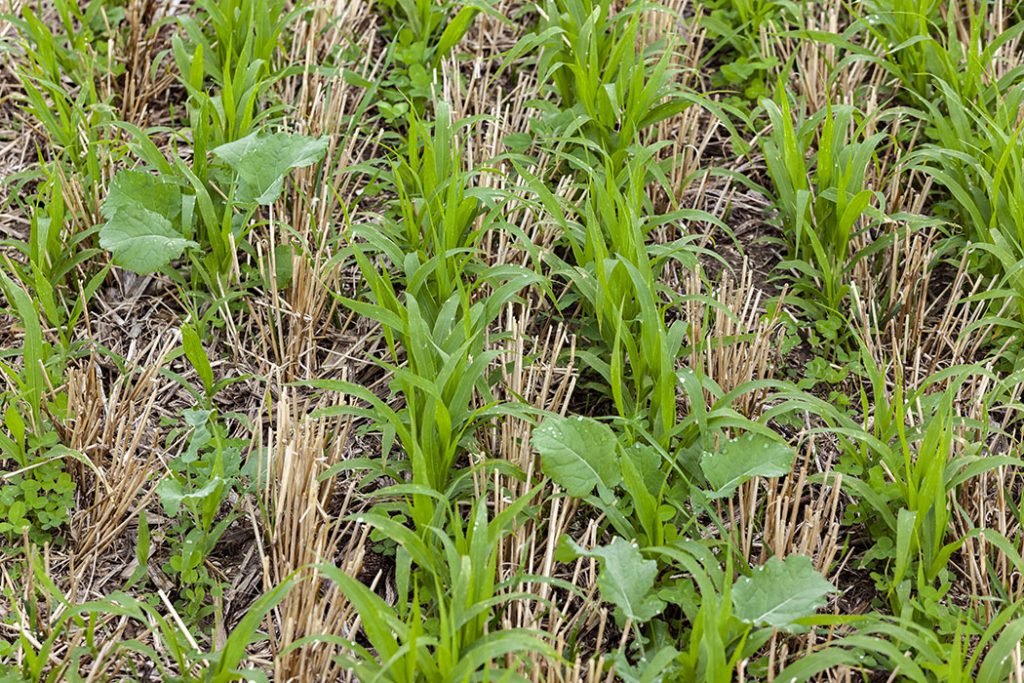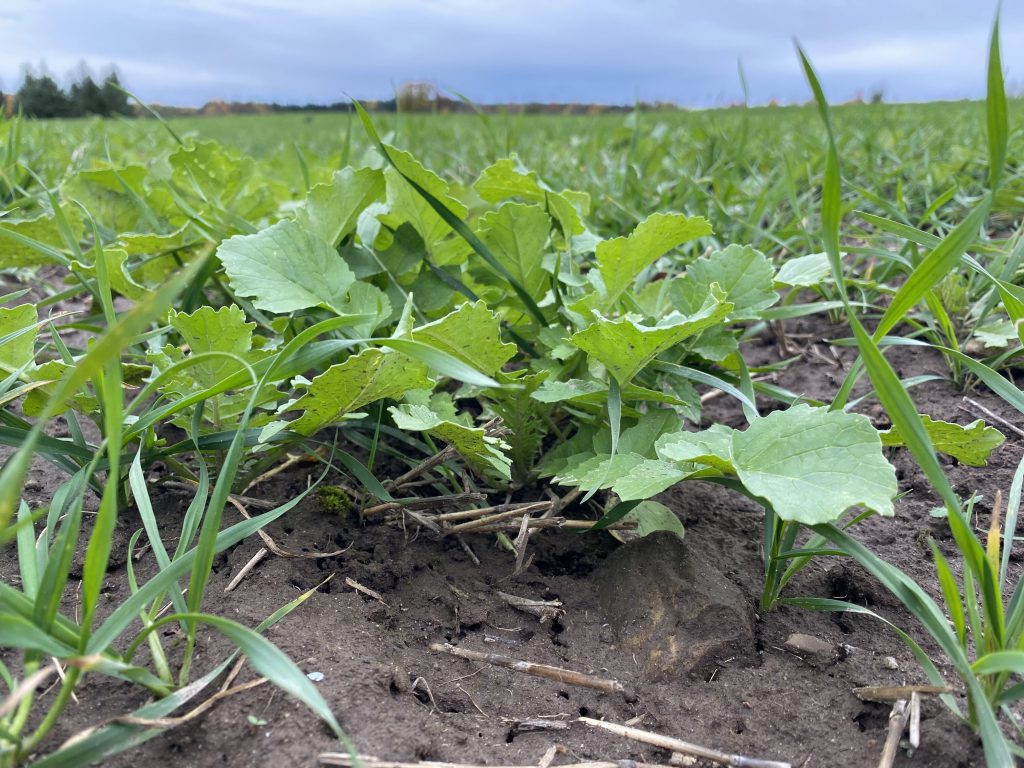Earth Day 2021: cover crops

Next up on our Earth day series, we are talking about a very exciting component of grain farming: protecting our soils with cover crops!
Soil health is important for so many reasons. When soils are healthy, everyone benefits; soil health improves crop health, it improves our food quality, it increases farm health, and it can also increase local ecosystems health.
One of the ways that Ontario’s grain farmers are helping to improve soil health is through the use of cover crops. Cover crops can include crops such as winter wheat, oats, red clover, radishes, alfalfa, sunflowers and rye. Cover crops are grown by farmers for the primary purpose of improving soil health in their fields. Keep reading to find out 4 environmental benefits of cover crops.
Can help to reduce the amounts of weeds that grow in fields.
A well-managed cover crop is a popular natural tool used by farmer to manage the number of weeds that grow in their fields. Weeds must fight with the cover crops for moisture, nutrients and light, and many cover crop types are very aggressive fighting for those resources. Also when farmers plant cover crops, they often plant it in thick quantities into existing crop stubble which doesn’t leave very much room for weeds to grow in.
Help control pests like insects and diseases.
Cover crops can be planted to break the cycle of insect or disease pests in the soil. If there is currently an insect pest living in the soil that lives off a particular crop (aphids in soybeans) by planting a cover crop, that pest will not be able to survive in the soil, therefore breaking the lifecycle of that pest. This is a natural way for farmers to break the life cycle of certain pests without having to spray an insecticide to control an insect that could destroy a growing grain crop.

This is the same for various diseases that exists in a host crop. If the disease does not have the proper host crops, it will naturally die off without having to sprayed by a fungicide, like in fusarium head blight in winter wheat. By having a natural way to break the lifecycle of insects and diseases, farmers will be able to improve their soil’s health.
Improve soil nutrient levels and soil fertility.
Farmers will often leave cover crops in the ground to decompose naturally, this will then increase nutrient levels in the soil. Cover crops can pull nitrogen from the atmosphere and turn it into a natural form of nitrogen such as ammonia. This allows for more nitrogen uptake by the following crops. With this, farmers can limit their fertilizers they apply to the soil, as natural nutrients are already there.
Prevent nutrient run-off.
When fields are left bare, things like fertilizers can be washed away from the fields and enter local waterways due to water or even wind erosion. Cover crops provide a cover to the bare soil that can help keep the field from eroding and can work to prevent and lessen nutrient run-off. In the long-run, cover crops can also help to improve the ways that water is used within the fields. For example, tillage radish can be used on fields that are heavily compacted and have trouble with water movement through the soil. Their large roots can grow deep into the compacted soil, break it part and allow for easier water movement. This can help keep growing plants healthy (water is now going to their roots!) and can help reduce water from running off the top of fields.

Click here to read more about how this sustainable practice can improve soil fertility.
Cover crops are one of the many ways that Ontario’s grain farmers are protecting the environment and are showing that they are responsible stewards of the environment.



